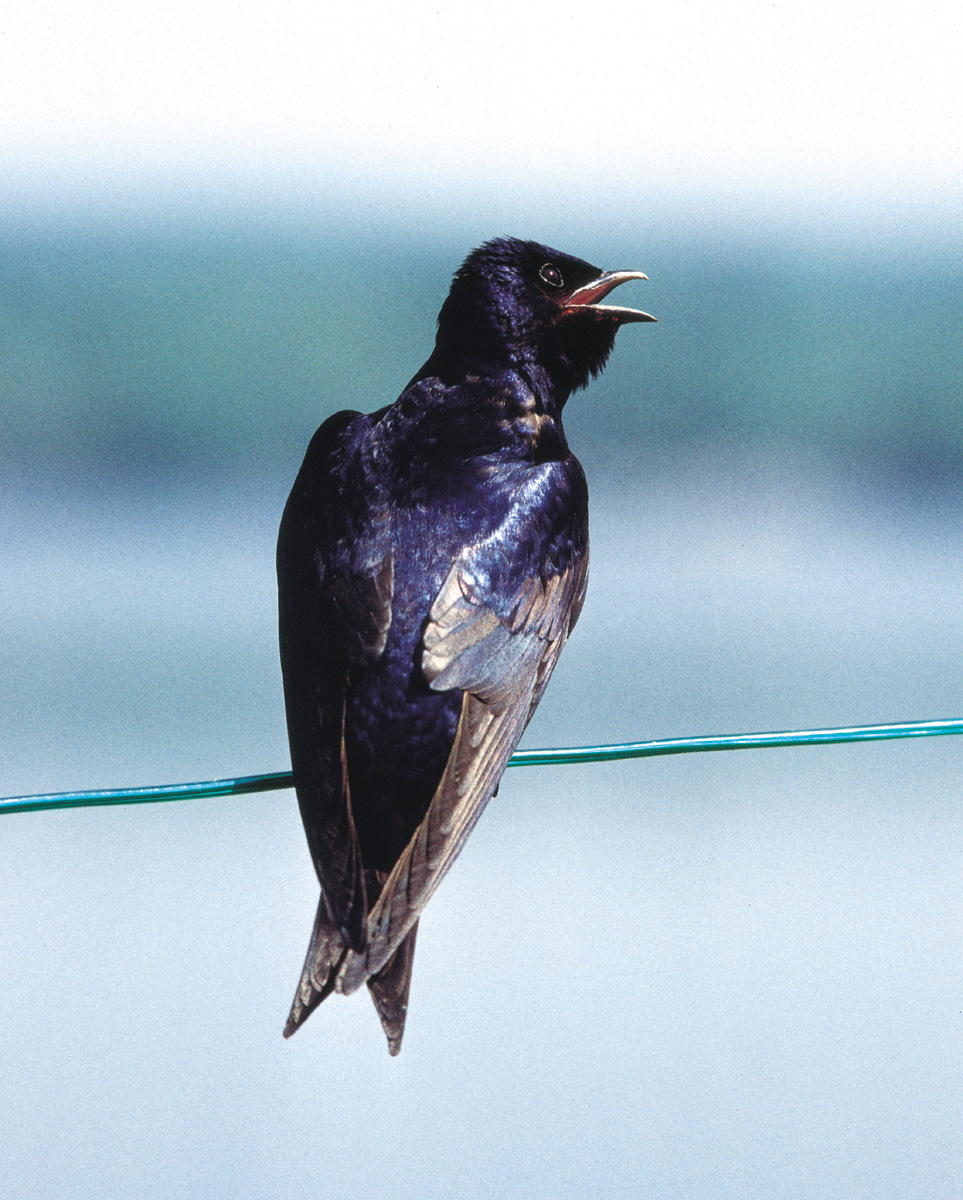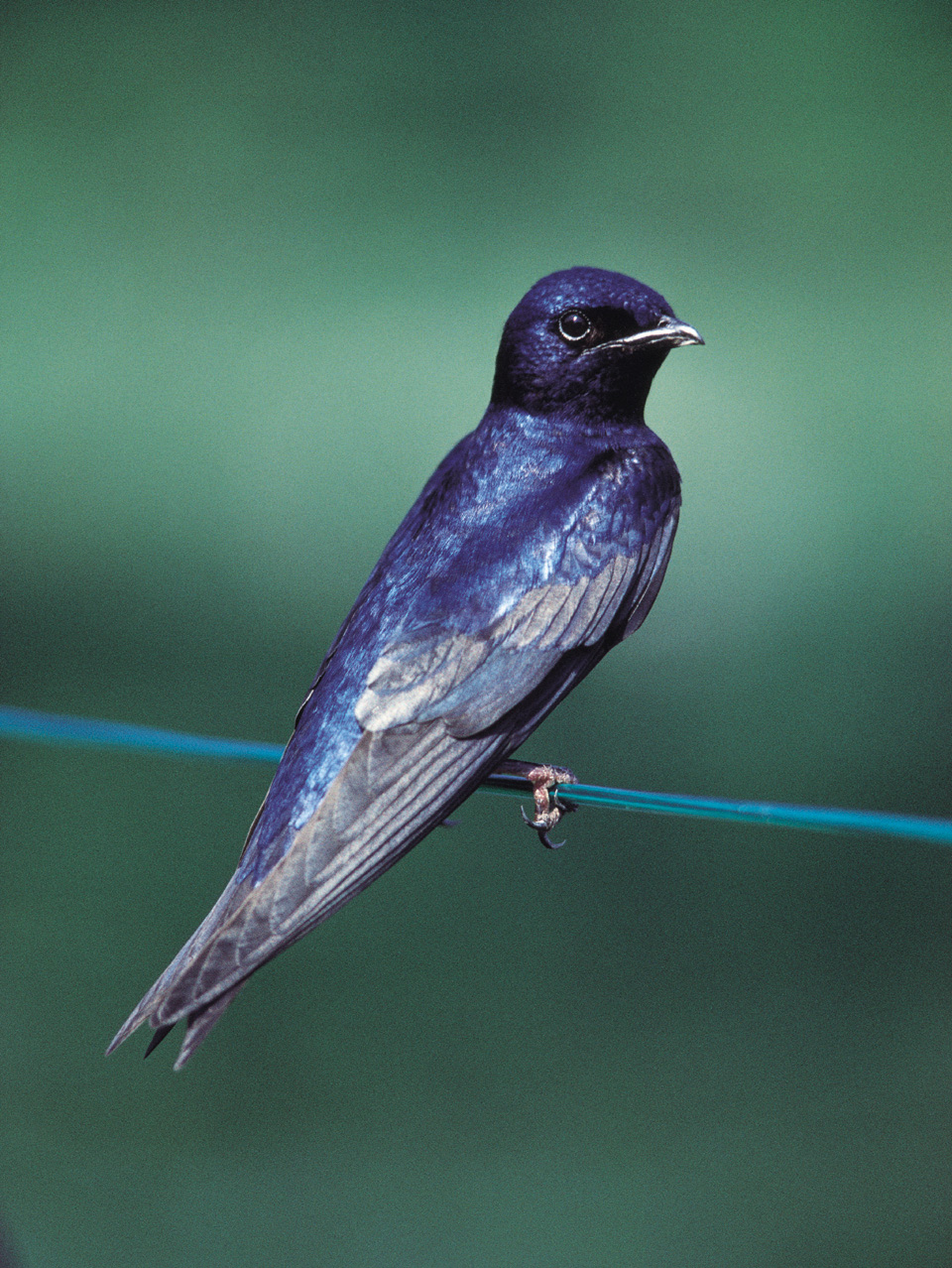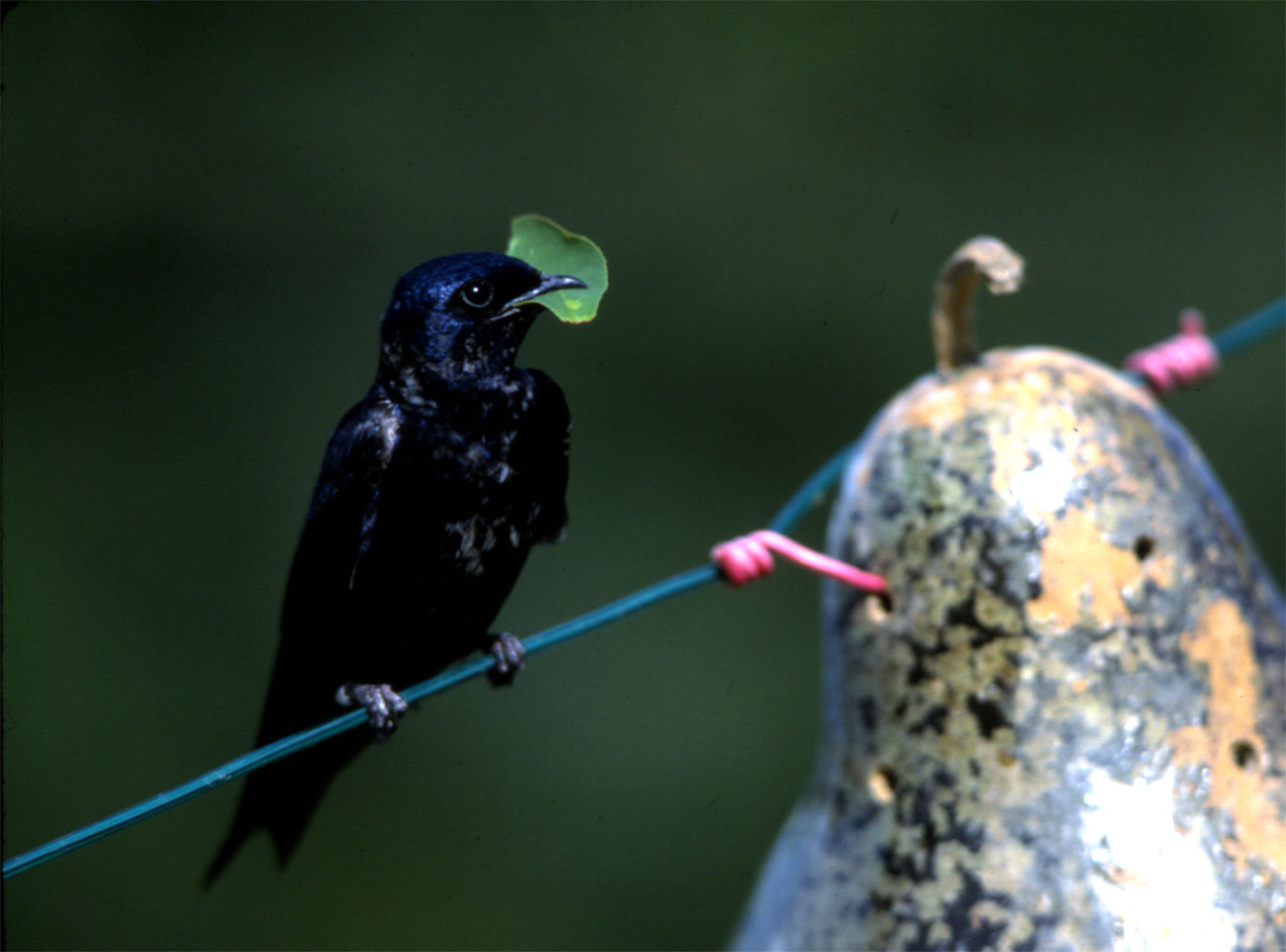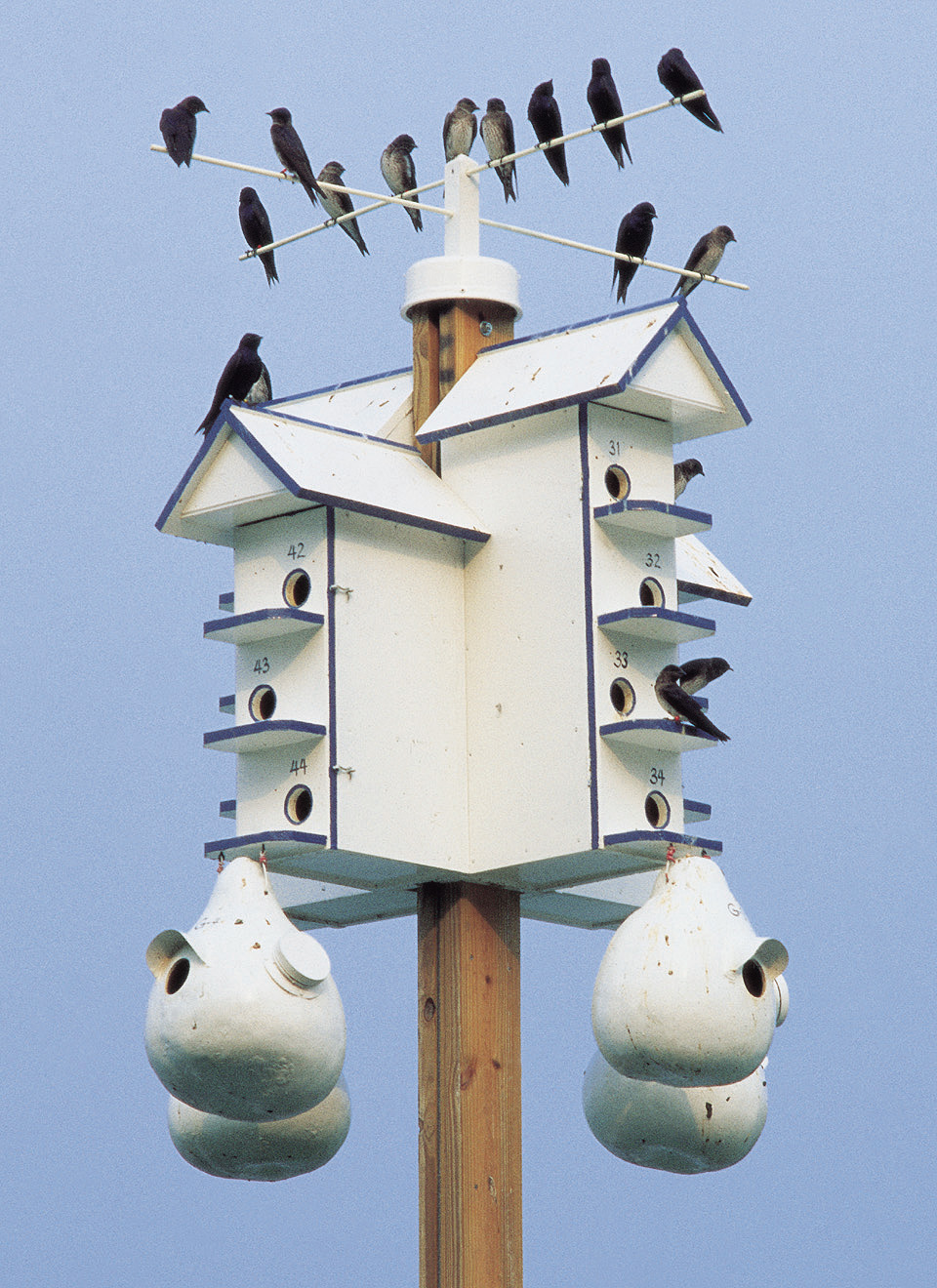Press Information
Copyright 2019, The Purple Martin Conservation Association. All rights reserved including photographs, text, and design thereof. Downloading and/or reproduction of these images or text online or in print without direct permission of The Purple Martin Conservation Association is strictly prohibited.
|
An alert male Purple Martin scans the skies for the presence of other martins. People once believed that the "scout," the term for the first bird to return to a colony site each spring, would find suitable housing and then head south again, in order to escort an entire colony back north to the housing he had chosen. Today, we know that the "scout" is simply the first bird to reach the colony site, and that he remains on site to claim the best nest cavity. A "scout" can be a male or a female martin. |
An adult male Purple Martin, showing the characteristic purple-black plumage that gives this species of swallow their name. Like many swallow species, martins seem to prefer to nest near people, and their aerial grace, bug-eating habits, and soft, pleasant vocalizations make them popular neighbors with the people who put up bird houses and gourds for the martins to nest in. Although martins have been heavily promoted as mosquito-eaters, diet studies conducted by biologists have failed to back up this claim. |
|
A male Purple Martin preparing to take a green leaf into its nest in a dried gourd. Both male and female martins take pieces of green leaves in to line their nest. Throughout the nesting period, they will keep house by removing dried or soiled leaves, and replacing them with fresh leaves. |
Purple Martins, a swallow species that nests in groups or colonies, obviously find this combination of a wooden martin house and gourds to their liking. Native Americans put up dried, hollow gourds for the birds to nest in thousands of years ago. When European colonists arrived in the New World, they put up gourds and added wooden houses, similar to the dovecotes they used to raise squab for the table. Today, east of the Rocky Mountains, Purple Martins rely almost completely on human-supplied housing for their nesting needs. |




